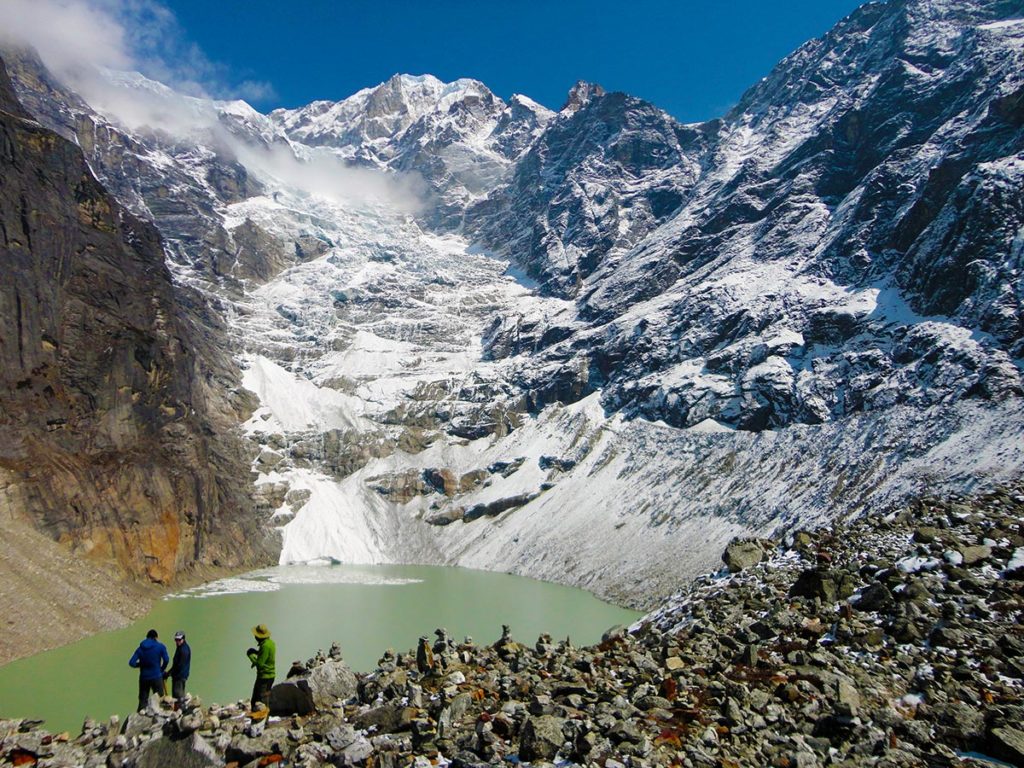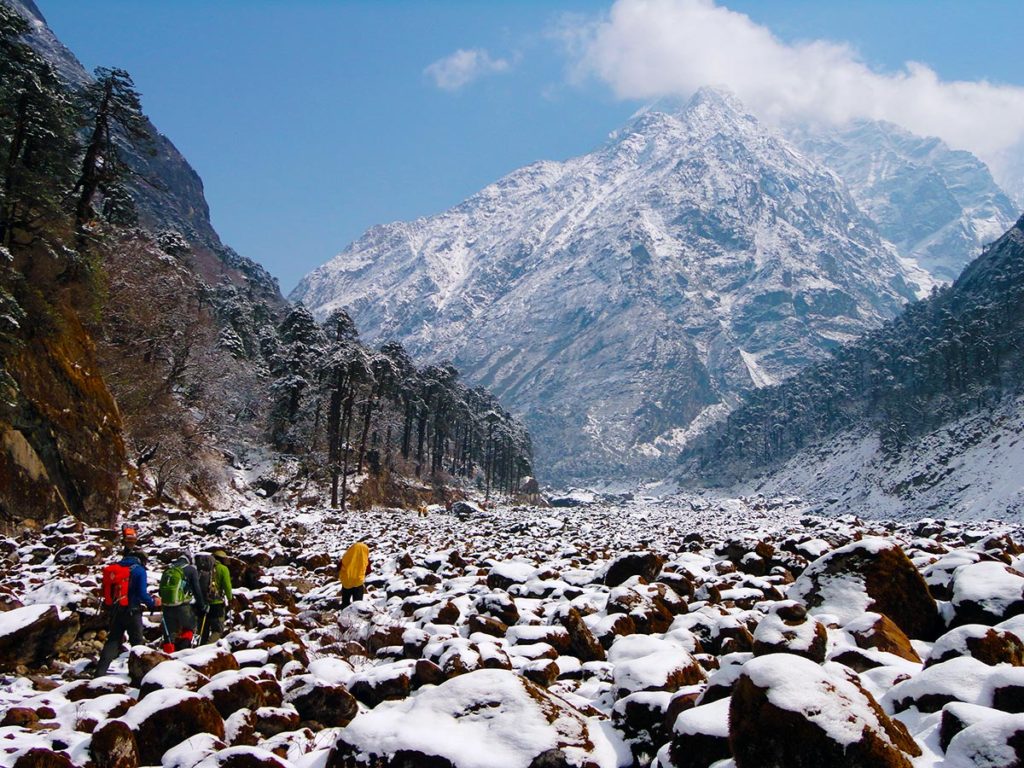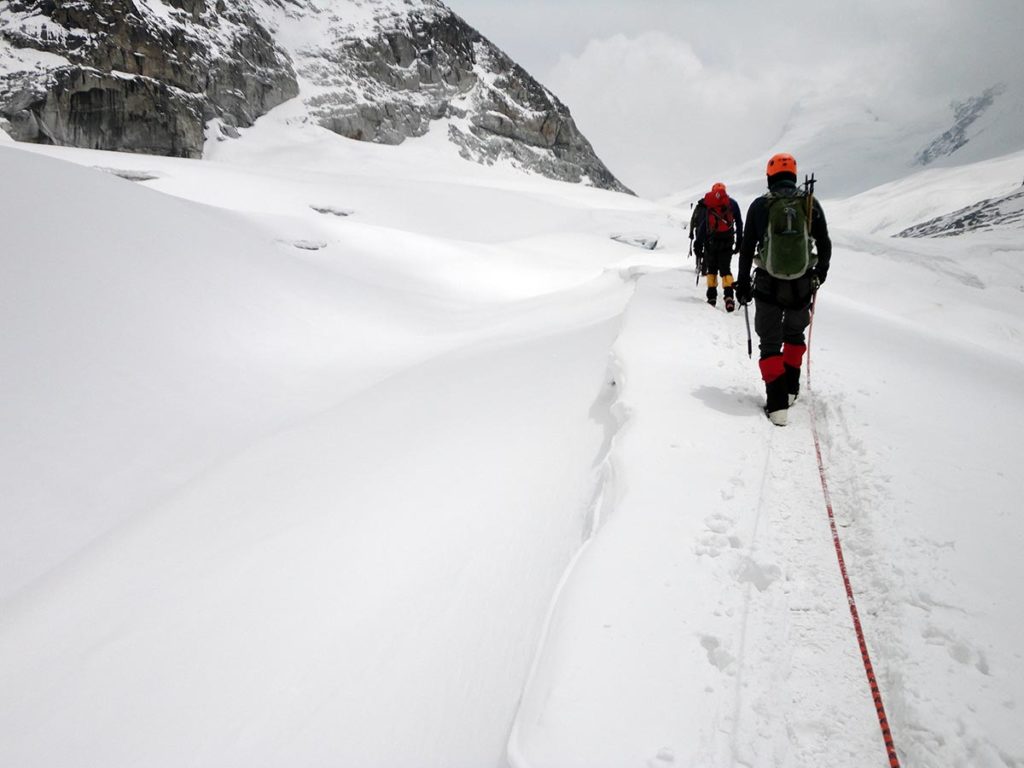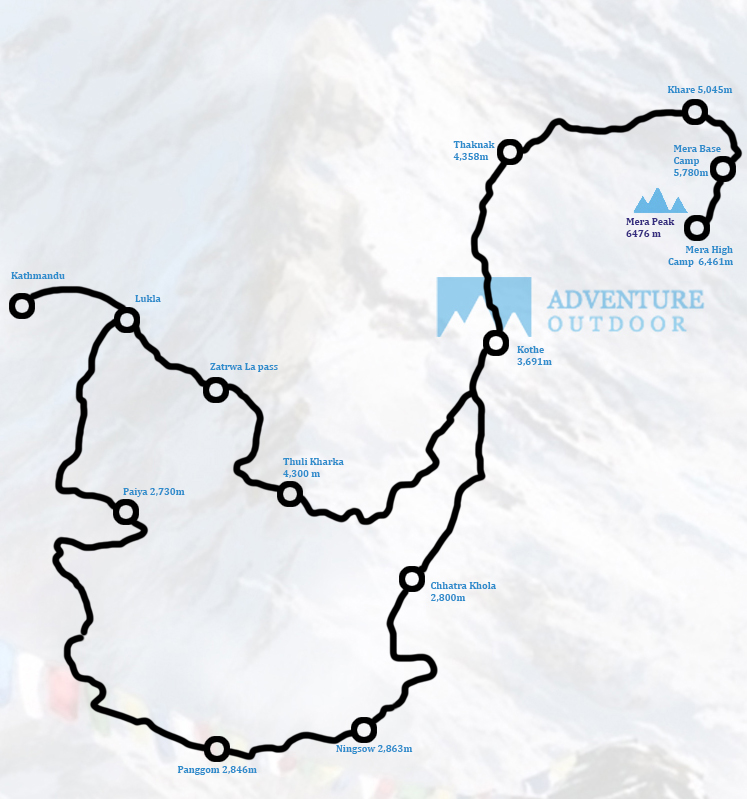Mera Peak Climbing takes us to the summit of Mera Peak (6,461m/21,190ft) which is the most astounding trekking peak in Nepal. We climb Mera Peak ideally amid the spring and harvest time seasons as it’s the best time to climb the mountain for its surprising perspectives of the Himalayan Vista. Five 8,000m mountains are unmistakable from the summit including Everest, Lhotse, Cho Oyu, Makalu and Kanchenjunga.
Adventure Outdoor sorted out its first climbing outing to Mera Peak in 1999. Our Mera Peak Itinerary is deliberately planned with unfaltering climb and a different day put aside in Khare to permit a lot of time for acclimatization. The standard course to Mera Peak is straightforwardly by means of the Zatra La Pass, however we take after the course that heads south from Lukla and up the wonderful Hinku Valley and later return by means of Zatra La pass. Following this course has a couple of focal points. We go through the excellent Nepalese wild as well as through interesting towns which will give us a look into the rich culture of local people. Furthermore, since the course is longer, it’s better for acclimatization.
Mera Peak climbing is an amazing alternative for anybody with direct mountaineering knowledge. It is a testing trekking peak because of its climbing, however the specialized mountaineering abilities prerequisite is exceptionally fundamental.
- Destination : Mera Peak (6461meter)
- Group Size : Min – 2 +
- Maximum altitude : 6461meter
- Grade : Strenuous
- Season : Spring & Autumn
- Accommodation : Tea House/Camping
- Duration : 18 Days
- Entry : Lukla
- Exit : Lukla
Adventure Outdoors warmly welcome the guest at Tribhuwan International Airport Nepal with a plea card along with Tourist bus, Hiace or a Car depending on the number of Visitors. Once arrival we transfer our guest to the hotel and if the pickup is of morning we serve a hot and wonderful lunch along a pleasurable hotel service and at night dinner in the city area and monitoring the ultimate facility of our guest we provide an accommodation service.
After the fine breakfast provided from the Hotel we pick up our guest from the hotel and help them to make a small tour in the early morning. The half day sightseen include wonderful places of Kathmandu along few driving distance country side where the food is served on a way according to the choice and preference of our customers. At night dinner is served and overnight stay hotel.
We take an early morning fly to Lukla and start our trek to Paiya after arriving at the Tenzing-Hillary air terminal in Lukla. We stroll on a wilderness trail, traverse the Handi Khola and reach Surke Village. From here we keep moving south and cross the Chutok La pass before reaching the little settlement of Paiya, which is called Chutok. Medium-term in Paiya.
We plunge for some time and reach a little scaffold. From here the trail is dangerous until the point that we cross the Kari La pass. We stroll through rhododendron and bamboo woodlands on a tight mountain trail. On the today’s trekking we get the opportunity to experience spectacular scene of the Dudhkoshi Valley. We proceed with our trek to Panggom Village whose settlers are dependent on cultivating and trading in Panggom.
We start our trek after breakfast. In the wake of trekking out of Panggom, we cross the Panggom La pass. At that point we climb, stroll on an enduring way and turn north. We cross Peseng Kharka Khola first then in the wake of strolling for at some point, achieve Peeng Kharka Danda. We cross Ningsow Khola (stream) before achieving the Ningsow Village. Medium-term in Ningsow.
From Ningsow, we climb first at that point plunge for some time and climb some more to achieve Ramailo Danda. From here we get exceptional perspectives of Mera Peak and Salpa. In the wake of climbing and sliding on our trail, we enter the Makalu Barun National Park. Our trail from here to Chhatra Khola is called Pasang Lhamu trail. In transit, in the event that we are fortunate, we may even run over the tricky Red Panda. Medium-term in Chhatra Khola.
We stroll towards the north on the principle trail to Mera Peak. After strolling on a trail by the Majang Khola, we converge with another trail which moves close by the Hinku Khola. Our trail propels straight towards Tashing Ongma which has regular coffeehouses. We proceed with our trek and traverse the Sanu Khola before achieving Kothe.
We trek along the edge of the Hinku Khola in the shadow of Mera Peak. We take lunch at Gondishung, the mid- year herders' settlement in the west bank of the Hinku Drangka. Past Gondishung, we pass a 200-year-old Lungsumgba Gompa where we can discover Mera Peak scripted in shake alongside its course to achieve Mera. A short walk takes us to Thaknak, which is a late spring brushing territory with crude cabins and shops.
Leaving Thaknak, we take after the sidelong moraine of Dig Glacier to Dig Kharka, which offers marvelous perspectives of Charpate Himal. The trail moves through moraines to the nose of the Hinku Nup and Shar icy masses, and after that trips more steeply to Khare. From here, we can see the northern face of Mera Peak which a stunning background will be. After lunch we can climb in and around Khare.
We have a different day put aside exclusively for acclimatization and fundamental preparing just to set ourselves up better for the Mera Peak climb. Our climbing pioneer will enable us to clean our essential climbing strategies and show the most ideal approaches to utilize our climbing gears like the ice hatchet, bridle, ascender climbing boots and crampons. The preparation will likewise incorporate taking in the best climbing strategy with the rope. Medium-term in Khare.
We stroll through a stone strewn course on a precarious trail to achieve the Mera Peak Base Camp. From here, we proceed advance through the Mera La go to achieve the Mera High Camp. Our way is along a rough trail, which can be unsafe on the off chance that it has as of late snowed, as there are various chasms here. We advance toward the highest point of the musical crew, which is set apart by a vast cairn. At that point we set up a high camp while getting a charge out of phenomenal perspectives of Mt. Everest, Makalu, Cho Oyu, the south face of Lhotse, Nuptse, Chamlang and Baruntse.
This is an extremely critical day for the endeavor. We wake up around 2 toward the beginning of the day for breakfast. It will be extremely chilly to start with however soon we warm up as we proceed up the ice sheet and onto a edge. The main beams of the sun hit the enormous peaks in an astounding red sparkle. The course is still non-specialized as we gradually move higher into the consistently diminishing air. The slant steepens for a segment behind the edge and the summit returns into see. At the foot of the last soak summit cone, we may utilize a settled rope if the climbing pioneer trusts it's required. The summit is just a couple of meters away. From the summit, we take in fantastic perspectives of the relentless Himalayas including Mt. Everest (8,848m), Cho-Oyu (8,210m), Lhotse (8,516m), Makalu (8,463m), Kangchenjunga (8,586m), Nuptse (7,855m), Chamlang (7,319m), Baruntse (7 ,129m) and others. Afterward, we follow our means back to the high camp where we rest for some time before plummeting to Khare. Medium-term in Khare.
There is no certification that we will have great climate on our arranged day for the summit. Subsequently, this day is put aside as a possibility if we can't summit the Mera on the coveted day because of awful climate conditions or some other unexpected reason. Be that as it may, if the outing goes easily, this day won't be required.
We trek from Khare to Kothe along a similar trail utilized already. After reachingheig Kothe, we commend our prosperity by experimenting with neighborhood delights and wines.
We start our trek to Thuli Kharka after breakfast. We move up and drop, cross a few tributaries of the Inkhu Khola before achieving a forked trail adjacent Taktho. We pick the trail to our right side and keep strolling. Our trail goes by a Chorten after which we walk downhill on a lofty trail. Next, we climb to Thuli Kharka and go by another Chorten in transit.
We cross the Zatrwa-La go at 4,600. When we cross the pass, we are invited by seeing the lovely Lukla Valley which is encompassed by Cho Oyu, Kongde Peak, Numbur Himal, Kusum Khangru and other Himalayan peaks. From Zatrwa La pass we walk the distance down to Chutang and after that straight forward to the Lukla town.
We find an early morning fly to Kathmandu. After reaching Kathmandu, we can take a rest or do some trinket shopping. If we need to investigate some other regions of Kathmandu, we may do that today. Our aides can assist you with both keepsake shopping or touring.
The groups are dropped at airport with warm hospitality for another destination
Service Included
- Airport pick up & Drop off
- Peak climbing permit/TIMS
- Climbing guide / Sirdar (One climbing guide for 4 climbers)
- One trekking guide/leader
- Necessary porters including a cook (some nights will be camping and will require cook and cooking utensils)
- All land transportation (from hotel to airport and from airport to hotel)
- All meals three times a day during the trek/climb (Breakfast, lunch and dinner)
- Accommodations in tea houses (lodges) and some nights for camping
- Necessary trekking/camping equipment such as tents, mattresses, sleeping bags, down jackets, cooking utensils, etc.
- Cooking fuel
- Camping charges
- Insurance and equipment for the climbing & trekking staff
- First Aid kit
- 4 nights hotel accommodation in Kathmandu
Service Excluded
- Personal nature expenses
- All drinks & beverages
- Hot shower
- Battery charges
- Tips
- Climbing equipment's
- Lunch and dinner in Kathmandu
Frequently asked Questions
Annapurna Base Camp is a Grade B or a moderately difficult trekking route. So any fit person can do this trek, even if you do not have any previous experience. You should be aware of what to expect and mentally prepare for it. Then, as long as you will to, you can.
On average, you walk about 4 to 6 hours per day. One or two days can be as less as 3hrs and one or two days can be as long as 7hrs.
The highest altitude reached is 4190m. This is the elevation of Annapurna Base Camp. ABC is the highest we will climb in this trek.
Yes, you can charge batteries en route. Charger should be brought. There are hot shower facilities as well. You may have to pay certain amount for both ($1-$2). Negotiate. Also, hot water facility could be free at lower elevation.
No. There are no ATMs on this trek route. You will have to draw enough cash in Pokhara or Kathmandu. There are a number of ATMs in these cities. Everything is paid in Nepali rupees. So money should be exchanged before the start of the trek.
Yes. Internet can be accessed in most places. Sometimes, there might be some technical problems. Internet in Nepal is not as fast as you are used to and at times you can just lose connection.
Not really. It depends on you. If you want, ABC trekking can be done independently. You could hire a guide and a porter by yourself instead of going through an agency or not hire a guide at all. Although, not having a guide can be a little problematic during off season. It really depends on you. Is it your first time in Nepal? How confident are you of being able to find your way around? How pressed on time are you? If you go through an agency, it will be costlier but everything will be planned. You will only have to come, trek and return.
For Annapurna region, pay for guides range from $20 to $30 per day and porters take $15 to $25 per day.





